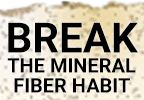NYU Confirms Efficacy of EvaClean PurTabs |
|
| Contributed by BSM Staff | |
BRAINTREE, MA -- New York University Langone Health has published a study of the efficacy of sporicidal disinfectants against C. diff and C. aruis, showing the use of EvaClean PurTabs NaDCC disinfectant resulted in the lowest bacterial colony counts on surfaces. Over the course of an 18-month period, NYUL’s Chief Epidemiologist Dr. Michael Phillips, along with environmental services (EVS) and building services teams, worked closely with EvaClean, the infection prevention division of EarthSafe Chemical Alternatives, to implement the study at two NYUL hospitals with a total of 1082 beds. “As a strategic partner, we put the onus on ourselves to help facilitate improvements across the board,” said Rich Prinz, Global Vice President of Sales at EvaClean. “Our PurExcellence Healthcare Program not only provides products but, customized protocols and continuous training as well.” EvaClean’s relationship with NYUL originated long before the study when the hospital first launched its dry wipes program. From early on, EvaClean was actively involved with NYUL staff and over time, the relationship evolved into a true partnership with a singular mission of reducing hospital associated infections (HAIs). Brian Spada, EvaClean Area Vice President Mid-Atlantic and Acute Care Lead, said, “Dr. Phillips and the NYUL staff placed an extraordinary amount of trust in our team, which enabled us to be on the floor daily. In the last year, we observed a dramatic shift in hospital culture toward more interdepartmental transparency.” A primary goal of NYUL’s study was to assess the adequacy of surface disinfection in reducing contamination. Three sporicidal chemical disinfectants were selected with minimal toxicity and surface damage profiles to determine efficacy for routine use in the healthcare setting: Electrolyzed water (EW), peracetic acid/hydrogen peroxide (PAA/H2O2), and Sodium dichloroisocyanurate (NaDCC), EvaClean’s PurTabs disinfectant. After phase one of the study revealed NaDCC to be the most effective chemical, phase two compared application using a two-step process of microfiber cloths followed by electrostatic sprayer on all patient room surfaces versus cloth alone. In the paper, it states that electrostatic sprayers allow for touchless disinfection and could be more effective at targeting sites that are difficult to reach with the standard mop plus wipe method as it distributes positively charged particles uniformly over surfaces. The results of the study published in the American Journal of Infection Control proved NaDCC was the best sporicidal disinfectant as it produced significantly lower colony counts compared to PAA/H2O2 and EW. When compared to mopping/wiping, application with the electrostatic sprayer produced even greater results leading to the conclusion that NaDCC applied with standard microfiber cloth and mop plus an electrostatic sprayer was the most effective chemical disinfectant method. Before year’s end, NYUL is planning to roll out the EvaClean program in as many hospitals as possible. In addition, a follow-up peer-reviewed paper discussing the clinical results including reductions in C. diff and C. auris is set to be published in early 2023. Originally developed by EarthSafe Chemical Alternatives in 2016, EvaClean has become the preeminent solution for safer, more sustainable infection prevention. Learn more at www.evaclean.com. |
|




